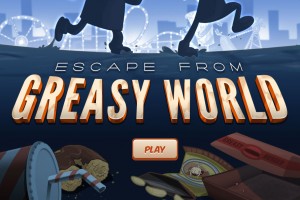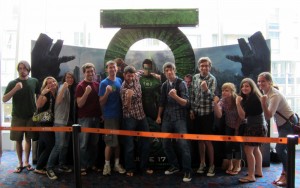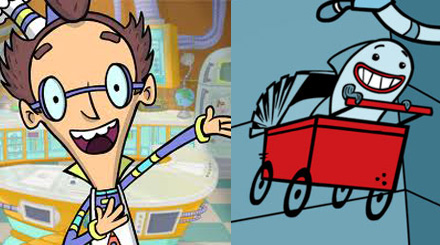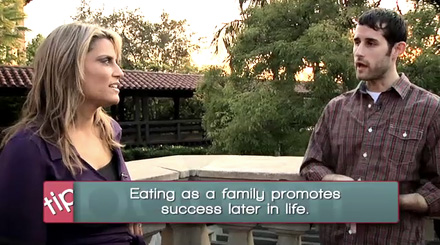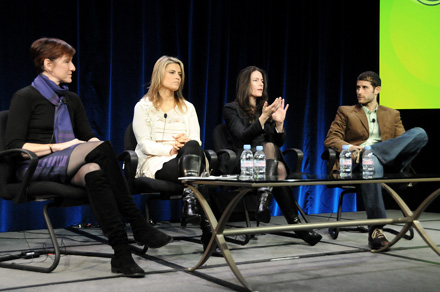
In honor of Earth Day, we decided to give y’all a look at the process of our latest game, Hectic Harvest. This farming game was a lot of work and brought along a whole new set of challenges we hadn’t faced in our game design process.
From the beginning, we had the challenge of setting our game apart from the dozens of online farming games. We researched farming-style games and took note of what was working and what wasn’t. In the early part of development, we had planned to have Henry and Avril serve as the main characters, and the user would control them on the farm. When we began the design documents, we realized that it would be difficult having the Labbers walk from plot to plot on the farm without stepping on the plants. We tried to brainstorm various game screens scenarios, but nothing seemed to work. Finally, one of us chimed in, “Wouldn’t it be awesome if they could just float from plot to plot” – it was our Eureka moment. Rather than using the Labbers, we decided to feature a character that does float – Mixie-Bot. From that point on, Mixie was our farmer, and it actually worked out for the better. With Mixie, we were able to introduce inventive gadgets and contraptions, so she could make mundane farming activities (i.e. watering and weeding) pretty awesome.
From the get-go, Mixie comes equipped with a handful of helpful gadgets, but as the game progresses and the player earns more money, they can visit an “upgrade store” and purchase add-ons for Mixie. These upgrades were designed to help speed up farming production, allowing the player to plant and harvest a larger crop for a higher cash reward. Some examples include a faster watering nozzle, rocket boosters that speed up Mixie’s traveling time from plot to plot, and larger upgrades such as the “Lady Bug Brigade” that eliminates all pests on the plots of land. We realized that the larger upgrades were game-changers and made the game more fun and significantly easier. When testing began, we only planned to have two large upgrades for weeding and pest removal, but watering (which is used more than any other action) didn’t have a large upgrade. Near the end of production, we decided to add the “Mega-Water” upgrade, which allows Mixie to summon a rain shower to water all your plants at once. This late addition added A LOT to the gameplay.
Two more challenges that we faced were determining the point system and difficulty of the game. When we design games, we always try to keep our audience in mind – kids. We can’t create games that are too difficult for us to play or kids will definitely struggle. With this in mind, we spent weeks tweaking the point system. Originally, users won points and money. Points were used to determine which ribbon you’d win and the cash reward was based on the number of points you accumulated. This system became confusing for us, so we decided to remove the “points” and focus solely on the cash reward. The monetary values that the player earns in each level would also determine the ribbon won. The money they earn in each level rolls-over into their “bank”, so they can earn enough and save money to buy the more expensive “large upgrades”. Once the point system was figured out, we had to determine the target goals for 1st, 2nd, and 3rd place in each level. We went through many rounds of testing and received a large spectrum of results. Some people scored really low on levels where other people were coming back with huge numbers. So, how was this happening?
We discovered it could be a number of things. In the game, each farming action is signaled by a visual alert icon, which is accompanied by a timer. From the time the alert pops up, to the time Mixie arrives at the plot, this time meter slowly expires. If the timer runs out before Mixie gets to the plot of land, the plant dies – This gives the game a sense of urgency and creates the fast-paced feeling. In addition, if the action is completed before the halfway mark on the timer, the player receives bonus points. We noticed that some people would immediately start planting seeds on every plot of land, and furiously send Mixie from plot to plot, but even if users were diligent, most of the actions would be completed near the end of the timers – resulting in less money earned. The best method is not to plant as many seeds as possible, but rather to plant a smaller crop and complete the actions before half of the time expires. This strategy will result in more bling. We took both styles of play into account when building the point system for each level.
Replay-ability was also something we took into account. We didn’t want kids to become frustrated for not earning high dollar amounts or ribbons, but we also did not want them to fly through the game and not want to replay it. So, throughout the testing process we came upon a successful point target system for each level. To get players interested, the 1st place ribbon is easily accessible on the first few levels. The later levels become more difficult to earn the higher ribbons. This will make the player have to replay for a number of reasons: to earn enough money to purchase the expensive upgrades, and also to use those upgrades to try to reach the 1st place ribbon.
The fast-paced style of Hectic Harvest did present a handful of challenging game-glitches and bugs. We spent weeks testing and tweaking to ensure the final game had was flawless. We definitely put a lot of thought into this game, and had to do a lot of problem solving to make it a success, but we also learned a great deal along the way. Hopefully, all of our work paid off. Take a look at the visual process below and then, get farming!

